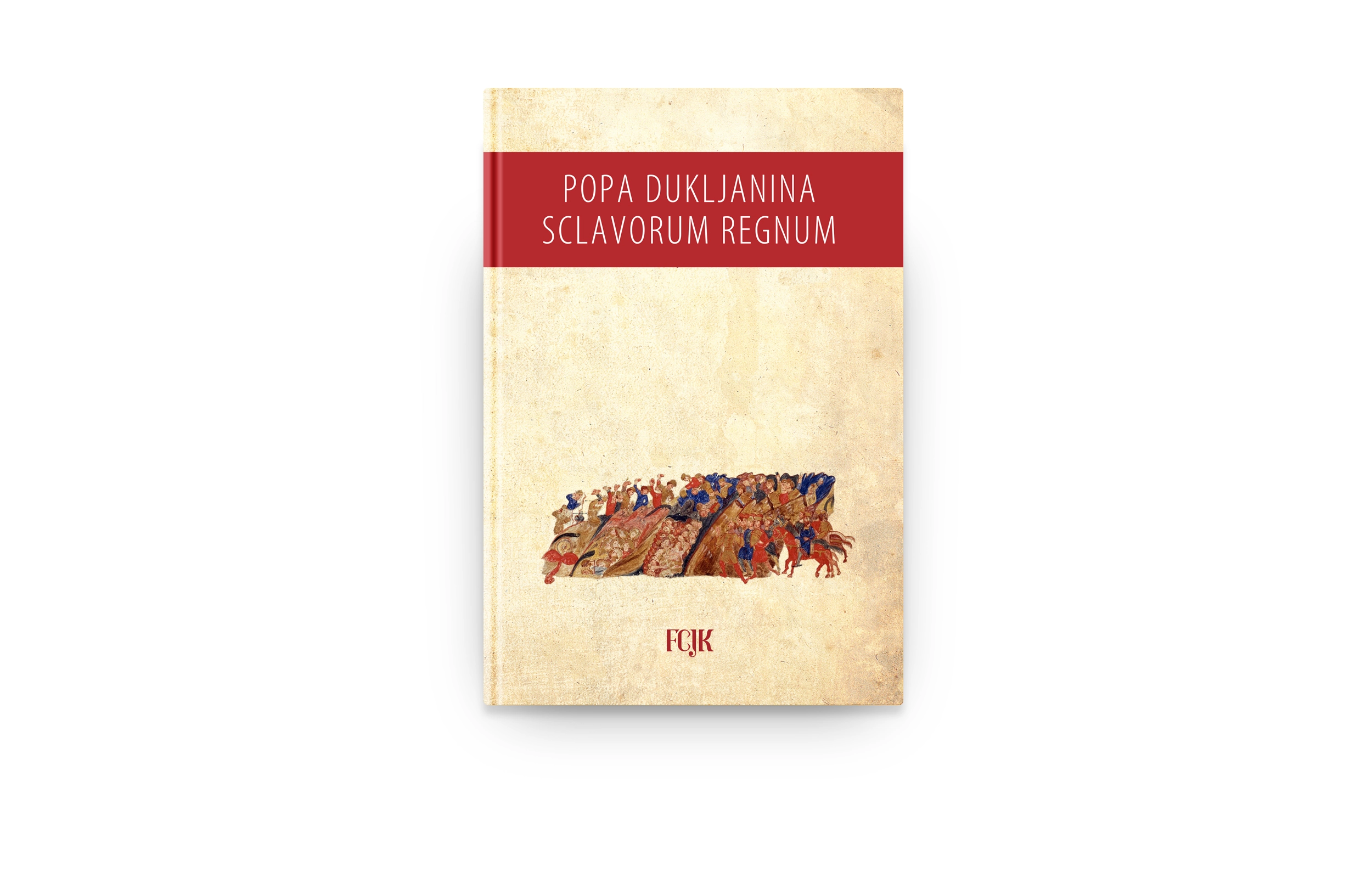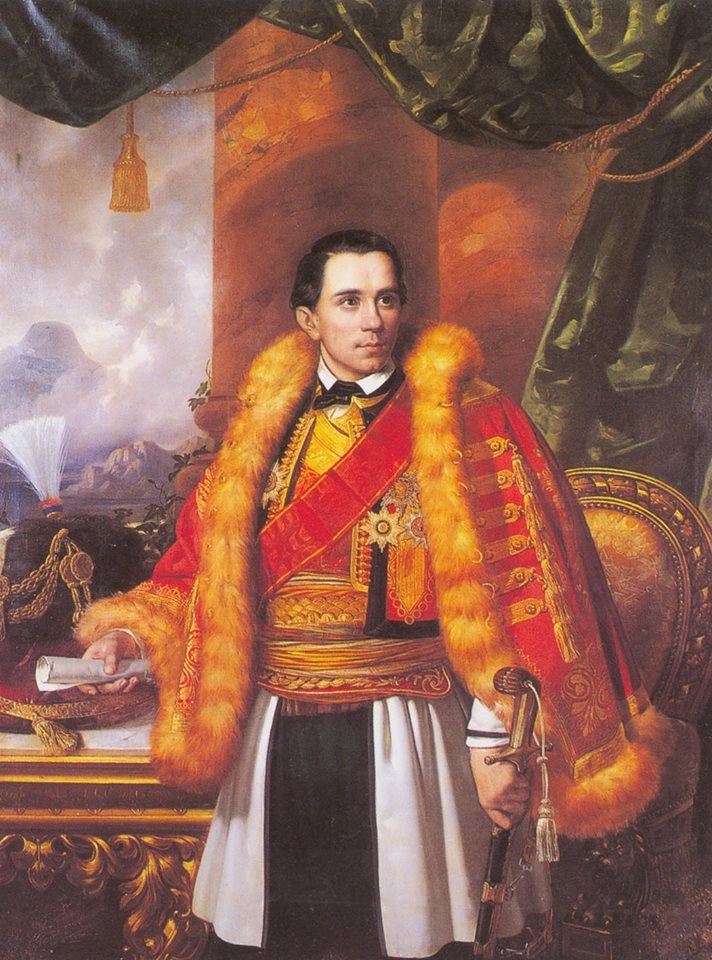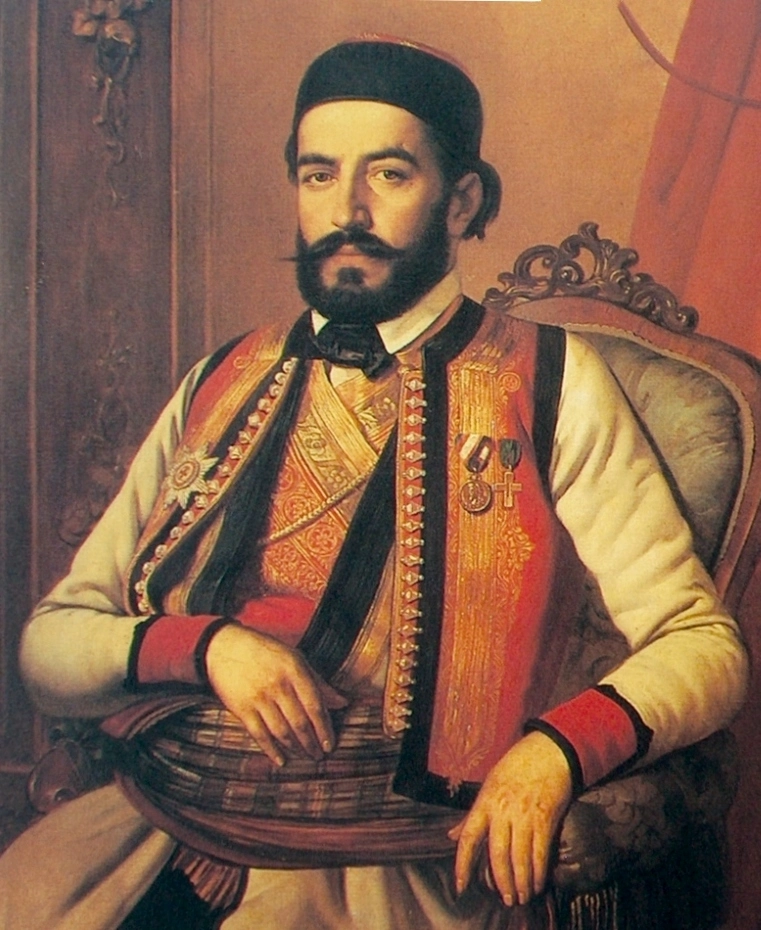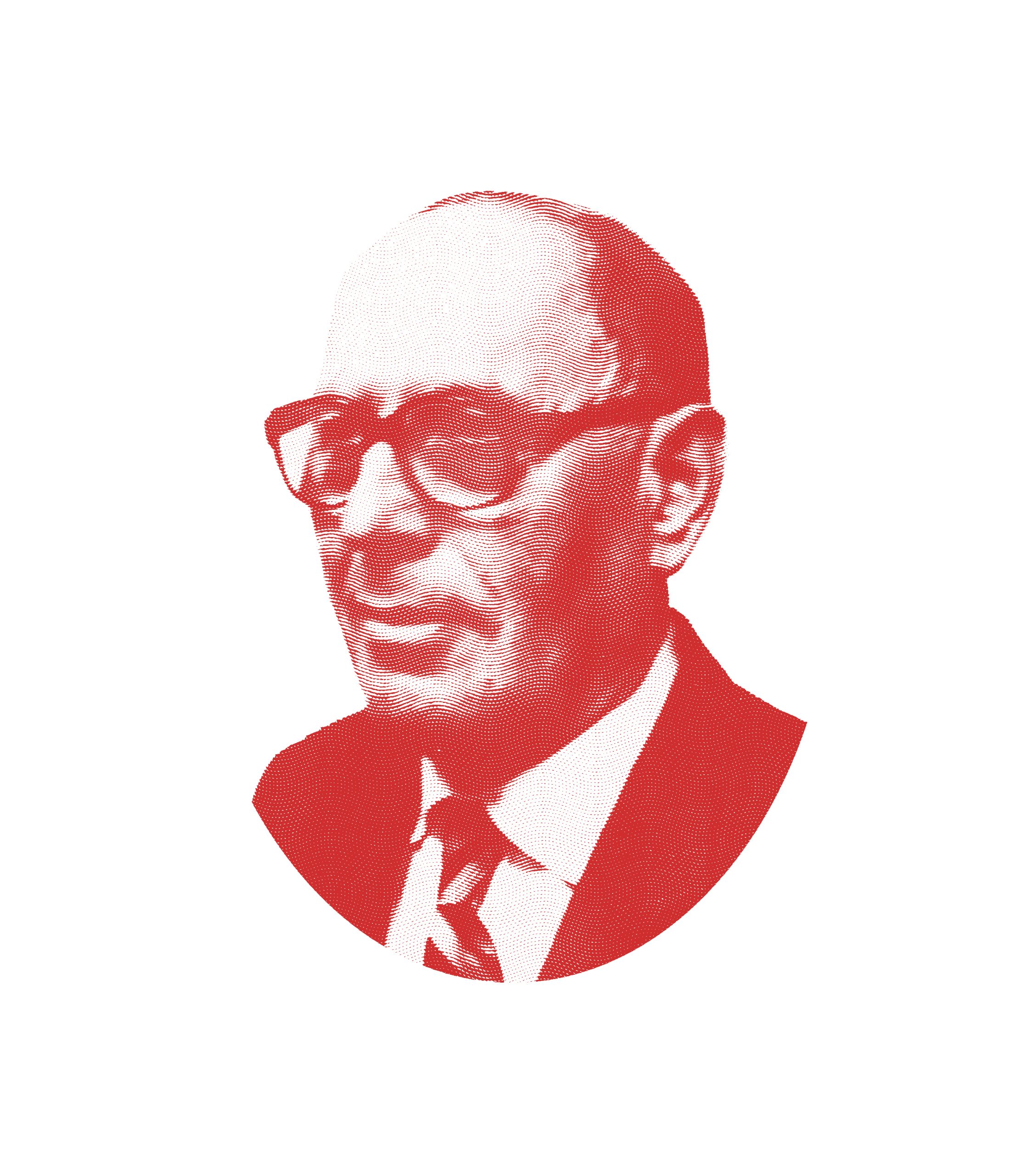The Montenegrin language is an integral part of the Štokavian language system. It is the official language in Montenegro (since 2007), and is also spoken by Montenegrins living abroad, especially those in Peroj (Republic of Croatia), Skadar, and neighbouring Vraka (Albania).
The historical development of the Montenegrin language can be divided into six periods:
The beginnings of Montenegrin literacy can be traced back to the middle of IX century, i.e. the Doclea’s Period. At the beginning of this period, a number of Benedictine monasteries were founded in the coastal area. While traces of Latin and Greek literacy from this period are partially preserved, there are only indirect testimonies of literacy in Slavic languages. The assumption that Glagolitic literacy could have developed in Doclea under the influence of a strong center of Slavic literacy in Ohrid seems likely, although there is a view in science that the Slavic Literature of the Doclea’s period was written in Latin alphabet. In this period, at the territory of the Skadar Lake, literary work is being developed. The center of literary activities was the monastery Prečista Krajinska, where representative literary work Život zetskoga kneza Vladimira was created by anonymous Doclean author from Krajina. Another important work from this period was the chronicle Regnum Sclavorum, i.e. Kingdom of the Slavs by Pop Dukljanin. Neither of these works was kept from decay in their original form; only their Latin transcriptions from the XVII century were preserved. Judging by the numerous monasteries and scriptoria on the Doclea’s former territory, as well as the high level of social development at the time when the Pope gave Duklja Royal National Recognition and an Archdiocese in Bar, it can be concluded that there was a high level of literacy at the time. This is also confirmed by the aforementioned Vladimir’s Life, as a prominent work of fiction. However, no original written works from this period were preserved as they, most probably, could not have survived the next period in the history of Montenegrin language – Zeta’s Period.
Proširi tekst
Zeta’s Period in the history of Montenegrin language starts with a fall of Doclea/Zeta under Raška’s/Serbian rule, and it encompasses the rule of Balšići and Crnojevići dynasties. There is no consensus among researchers with regard to dating Glagolitic and Cyrillic alphabets in today’s Montenegrin territory. Some authors believe that these two alphabets could not exist in the Doclea’s Period as they were a reflection of Eastern-European ideology and culture, rivalled by, in their opinion, explicitly Western oriented Doclea. On the other hand, many scholars believe that Glagolitsa was used in the Doclea’s Period of Montenegrin literacy, and there are also those who believe that the earliest works of Montenegrin literature were written in Cyrillic alphabet. However, on the basis of preserved manuscripts, it can be safely stated that Old Church Slavic language and Cyrillic alphabet were dominantly used in the Zeta’s Period.
In this period, Glagolitic alphabet will be completely displaced by Cyrillic. Its inglorious fate is vividly described by the fact that Cyrillic Ilovička krmčija (Ilovica Codex) was tied together with two Glagolitic pergaments serving as book covers.
Those pergaments were in fact Mihanovićev odlomak, which, in this manner, was preserved until today. In the XV century, in Orthodox churches on the islands and shores of Skadar Lake, many priests were working on rewriting and illuminating church books. Therefore, appearance of the Montenegrin printing house can be viewed as a natural consequence of this widespread scribal literary activity.
The printing house, established by Đurađ Crnojević, was most probably originally kept in Obod, while its operation began in Cetinje. Five incunabula were printed in this printing house: Oktoih prvoglasnik (Oktoih, the first voice), Oktoih petoglasnik (Oktoih, the fifth voice), Psaltir s posljedovanjem (Book of Psalms with Possession), Trebnik and Četvorojevanđelje (The Fourth Gospel). Only four Slavic peoples have incunabula in their own language or in Old Church Slavic language with their own redaction and those are Czechs, Croats, Ukrainians and Montenegrins. In the Zeta’s Period, Zeta (Montenegrin) redaction of the Old Church Slavic language is developed. The most significant representative of Montenegrin/Zeta’s Cyrillic redaction and a period’s representative work is Miroslavljevo jevanđelje (Miroslav’s Gospel), created in Kotor in the eighties of the XII century, written by two authors – Zećanin Varsameleon, who wrote the major part of the work, and Rašanin Gligorije, writer of the last two pages. Montenegrin/Zeta’s redaction is defined as a type of Old Church Slavic language adapted, in terms of articulation, to the local language of writers from medieval Zeta. This redaction was most probably created in Stefan Nemanja’s office in Kotor, and it marked the Zeta’s Period of Montenegrin literacy and literature, although there are authors dating it even further in the past. Both, Bosnian and Serbian redactions of the Old Church Slavic language developed from it. Zeta’s/Montenegrin redaction was often, without any foundation, treated as zetsko-humska (Zeta’s-Hum’s), although it is known for a fact that it was created in Zeta from where it spread across the Hum.
Written Language Period encompasses the time from the end of XV century to the mid XVIII century. Written language here refers to the written realization of the local spoken language. In the new socio-historical circumstances, Montenegrin language with the national basis is gradually reused in Montenegro. However, Old Church Slavic language will still be used in the Orthodox Church for a long time. In this stage, as a consequence of Zeta’s Period, books in Old Church Slavic language and Cyrillic alphabet are dominant. However, in Boka, Zeta’s/Montenegrin type of the Old Church Slavic language did not leave significant traces in the period’s literature. In Boka, Latin and Italian had primacy, especially in the period of Humanism and Renaissance, while the Baroque era was marked by the increasing use of the people’s language in the literature. Unlike the described linguistic situation characteristic for ecclesiastical use, already in the previous epoch, the people’s language started to again make its way into literacy in the domain of secular use. Numerous epigraphs, notes, charters, wills, etc, testify to the use of people’s language with elements of Church Slavic literacy. This is also confirmed by vranjinske povelje (Vranjina Charters), created by Zeta’s/Montenegrin writers in the times of Nemanjići, Balšići and Crnojevići. Written language in the secular use will continue to follow the development of Montenegrin spoken language, and as the time passed by – the literary language was becoming increasingly free of Church Slavic elements. Spontaneous homogenization of Montenegrin people’s and literary language was particularly affected by thoroughly developed oral literature and the cult of words. Two most important writers in the Written Language Period appeared in its late stage, the Baroque period. They are Andrija Zmajević in the coastal area (Boka Kotorska) and Danilo Petrović Njegoš in the continental part (Cetinje). Both of them wrote in Montenegrin people’s language.

Since the second half of the XVIII century, primarily through strengthening of the state and church organization, prerequisites were created for establishing uncodified Montenegrin literary language as a medium of common communication in the whole area under jurisdiction of the state and the church, as well as in the Montenegrin coastal area. Thus, the written language spontaneously transformed into uncodified literary (standard) language. This process made the development of Montenegrin language specific, as the basis for its foundation was the naturally formed koine layer, previously established in the language of oral literature. It was already at that time that people’s and literary language were almost completely homogenized, so Montenegrin writers wrote in accordance with the speech norms.
Before Vuk Stefanović Karadžić was even born, Ivan-Antun Nenadić (1768) from Perast advocated for the phonetic spelling principle that it can be written as it is spoken and that it should be spoken the way it is written. This rule was implemented very early in the language of the Montenegrin literature. It is therefore no surprise that principles of the Vuk Karadžić’s linguistic reform were accepted without any problems later. Even back then, in the period of uncodified Montenegrin literary language, three styles could be noticed: fictional, business and scientific. They were all formed in the process of spontaneous Montenegrin language standardization. Montenegrin literature was, in terms of its content and linguistically, flowing from the people’s life. In the period in question, the greatest achievement of such a literary language was achieved in Poslanice Svetoga Petra Cetinjskog (Epistles of St. Peter of Cetinje).

As a consequence of Vuk Karadžić’s linguistic reform, in the Montenegrin language of the Transitional Period (from the thirties of the XIX century to the World War I), significant changes occurred, as well as the official termination of some typically Montenegrin linguistic features. Throughout this entire period, the language in Montenegro was officially called Serbian, and adaptation of the Montenegrin language to the general Štokavian Karadžić’s model was mainly carried out through textbooks and external teaching personnel who wholeheartedly followed principles of Vuk Karadžić’s linguistic reform. As Vuk’s principle of introducing the people’s language into literature had no opponents in Montenegro (because in Montenegro this principle existed even before Vuk), his linguistic reform also had no major opponents. However, not all the principles of the reform were accepted smoothly, so disagreements arose among Montenegrin cultural workers because the Karadžić’s linguistic model was intended for an area of which Montenegro was only a minor part, so some Montenegrin linguistic features were dropped out in the course of time. The main cause of disagreements was the sacrifice of these linguistic features which, in Montenegrin literacy and literature, had an extensive, centuries-long tradition. Long debates were especially marked by views of Jovan Pavlović (Vuk’s consistent follower), those of Lazar Tomanović who, among other things, advocated for introduction of graphemes ś and ź, and those of Đuro Špadijer who, in his Serbian Grammar (intended for third and fourth grade of elementary schools in Montenegro), introduced some features which the Vuk’s model listed as dialect words and provincialisms, and Mirko Mijušković, a graduate from the Belgrade Higher School (Velika škola u Beogradu).
However, in Montenegro, continued implementation of Karadžić’s linguistic reform started since the school year 1863/64, in Cetinje’s “Small School”, in the Orlić almanac since 1865, and in writings of the Montenegrin Senate and public administration since 1868. This was the beginning of a systematic process of adaptation of typical Montenegrin linguistic features in official (written) communication, because all features not included in Karadžić-Daničić’s linguistic model were thrown out of official use (defined as dialect words and provincialisms). This reform will, by the end of XIX century, ensure its final victory in Montenegro, especially in administrative, publicistic, and scientific style. Fictional style resisted to this process the longest and it mainly stayed outside the reach of the mentioned reform, managing to preserve basic Montenegrin linguistic features and pass them on to the XX century. Works of the three most representative authors from this period - Petar II Petrović Njegoš, Stefan Mitrov Ljubiša and Marko Miljanov Popović testify to this preservation of Montenegrin literary language in the fictional style.

The processes initiated in the Transitional Period were finalized in the following, Vuk’s Period, which will mark the XX century and carry on to the new millennium. This period is divided into two stages: Belić’s and Modern.
Montenegrin literary language has undergone the largest changes in the stage marked by work of the Serbian linguist Aleksandar Belić, that is, between the two World Wars. Montenegrin specific linguistic features were preserved in the fictional style during the two first decades of the XX century; however, after that, in the new socio-historical circumstances, fictional style was merged, just as the administrative, publicistic, and scientific styles, into the common “Serbian/Serbo-Croatian” language template. Although Belić’s Orthography from 1923 formally permitted ijekavisms, the author stressed, in this and in subsequent editions, that jekavian iotation was a dialectical feature, so Montenegrins were obliged to use the non-iotized atypical forms such as djed, cjedilo, tjerati, sjesti, etc. In subsequent editions, Belić abolished the formal recognition of longer suffixes in the declination of pronouns and adjectives -ijem, -ijeh, and, instead, codified only short suffixes. Thus, Vuk’s supporters will be the first ones to abandon Vuk’s language model. But, despite formal recognition of ijekavisms in the literary language, the period between the World Wars in Montenegro will be marked by increasing use of ekavisms. Ekavisms were mainly introduced through the education system, as the majority of textbooks and teaching personnel were using them. This is vividly testified by the articles in the contemporary Montenegrin papers. The main determinant of the Belić’s Stage was the removal of differences between the Montenegrin and Serbian language, and immersion of Montenegrin into Serbian.

Modern Stage in the development of Montenegrin literary language began after World War II, when the language status improved together with the state position. However, at this time, Montenegro was still not granted the right to call its language by its own name. The official language was Serbo-Croatian, i.e Serbian as of 1992, but at least the status of ijekavisms was constitutionally guaranteed. Montenegro and Montenegrins will, once again, be left out of the language standardization process, so in the Conclusions of the Novi Sad Agreement (Novosadski dogovor) it was emphasized that the common literary language was developed around two main centers - Beograd and Zagreb, and that a group of Serbian and Croatian experts would jointly prepare the draft orthography. This orthography also included no typical Montenegrin macro-structural features. Although the official language policy backed these conclusions, management of the Association of Writers of Montenegro renounced the ill treatment of the Montenegrin language in the Serbo-Croatian Language Orthography. In 1968, a group of cultural workers appeared in Montenegro, advocating a new approach to fundamental Montenegrin values confirming the existence of separate Montenegrin people, nation, language and state.
thanks to the efforts of this generation of Montenegrin cultural workers that a number of institutions working on protection of fundamental Montenegrin values were formed in Montenegro after the break-up of the Socialist Federal Republic of Yugoslavia. We should, first of all, mention the Montenegrin PEN Center, Matica crnogorska, Doclean Academy of Sciences and Arts, Institute for Montenegrin Language and Linguistics, and the Montenegrin Association of Independent Writers.

Very important role was played at that time by the Montenegrin PEN Center’s Declaration on the Constitutional Status of the Montenegrin Language, appearance of which provoked the last attempt of some unificatory linguistics representatives to introduce ekavian dialect in this traditionally ijekavian area. That attempt failed as it was condemned by most linguists, some of which belonged to that very unificatory linguistics, denying the existence of Montenegrin language. Still, in the last twenty years, attempts and efforts were made by some linguists to codify certain ekavisms in the Montenegrin standard language – although there is no scientific foundation for such attempts as they only reflected the unitarianist language policy and an import from ekavian areas.
Such attempts were justified by the so-called spontaneous language development and the need to simplify groups “difficult to pronounce” (for example, rječnik > rečnik; sljedeći > sledeći; prijelaz > prelaz, etc). In the last decade of the XX century, as a result of the long-time study of the Montenegrin language, abovementioned institutions published the textbooks necessary to study this language. These are: orthographic manual Write as You Speak (Montenegrin Association of Independent Writers, Podgorica, 1993), two-volume history of the Montenegrin language – Montenegrin Language (Matica crnogorska, Cetinje, 1993 & 1997), Orthography of the Montenegrin Language (Montenegrin PEN Center, Cetinje, 1997) and the Grammar of the Montenegrin Language (Doclean Academy of Sciences and Arts, Podgorica, 2001). Through these books, science of the Montenegrin language – Montenegristics, was founded. Their author was Vojislav P. Nikčević, and on the basis of these books, Montenegrin language became a subject of study in many Slavic departments. Finally, the struggle for the affirmation of the Montenegrin language was crowned with success by the new Montenegrin Constitution (2007), in which Montenegrin acquired the official language status for the first time. Already in 2008, the Government of Montenegro established the Council for the Standardization of the Montenegrin Language, with a view to preparing the orthography, grammar, and the dictionary of the Montenegrin language. However, the Council failed to fulfil this mission, as a group of its members, burdened by traditionalist linguistic views, could not accept the codification of typical Montenegrin linguistic features. After eighteen months of unsuccessful work, the Council was abolished and the Expert Commission for the Standardization of the Montenegrin Language was formed (Milenko A. Perović, Josip Silić and Ljudmila Vasiljeva). This Commission started the work on editing the draft version of the Orthography of the Montenegrin Language, written by Adnan Čirgić, after which the Orthography was adopted (2009). The Commission then appointed linguists to prepare the Grammar of the Montenegrin Language – Adnan Čirgić, Ivo Pranjković and Josip Silić, in cooperation with Jelena Šušanj. The Editorial Board was also established (Milenko Perović, Josip Silić, Ljudmila Vasiljeva, Adnan Čirgić and Jelena Šušanj), and it prepared the second, revised edition of the Orthography of the Montenegrin Language. Thus, in 2010, Montenegro got its official orthography and grammar of the Montenegrin language.

Montenegrin speeches are among the best-studied speeches in the Slavic world. Very few parts of Montenegro were not researched in terms of their dialectological features. However, the synthesis of Montenegrin speeches, Montenegrin Dialectology, was still not written. Montenegrin speeches are (i)jekavian Štokavian speeches. Until recently, there were also two ikavian-jekavian speech groups: Muslims in Podgorica and Gusinje. However, today, ikavisms are only preserved in the speech of the oldest speech representatives and in the speech of Podgorica emigrants in Skadar. In the speeches alongside the Serbian linguistic border, primarily in the Montenegrin part of Sandžak, the replacement of yat is ijekavian-ekavian (although there are significant deviations), certainly a product of Serbian linguistic influence.
These speeches were mainly studied within the framework of traditional Serbian/Serbo-Croatian studies. This is the main reason why many scholars tried to prove the existence of two strongly polarized dialects encompassing Montenegrin area (not matching the Montenegrin state borders). For the north-western Montenegrin speeches, a term East-Herzegovina’s dialect (istočnohercegovački dijalekat) was adopted, while the remaining part of the speech was named differently: East-Montenegrin dialect (istočnocrnogorski dijalekat), Zeta-Lovćen’s dialect (zetsko-lovćenski dijalekat), Zeta-Sjenica’s dialect (zetsko-sjenički dijalekat), Zeta-South Sandžak’s dialect (zetsko-južnosandžački dijalekat), Zeta-Upper Polimlje’s dialect (zetsko-gornjopolimski dijalekat), etc. In addition, there were linguists trying to prove the syntagm Montenegrin speeches untenable, because in the Montenegrin territory there were “no” phenomena which could not be found in other areas of “Serbo-Croatian” language, i.e. Štokavian dialect.

If we can talk about diversity and dispersiveness of Montenegrin speeches, i.e. their strict polarization, than this accentuation is theirs. Accent, better than any other linguistic layer, can determine Montenegrin speech representatives’ belonging to a specific local speech. No other linguistic layer or feature can be a reliable determinant in this regard as many local speeches are extremely similar or equivalent in terms of all other features. Montenegrin speeches include two-accentual, three-accentual and four-accentual systems. Three-accentual system is represented in Lepetane, Ozrinići with Broćanac and Gusinje; four-accentual system in north-western Montenegrin speeches, Bjelopavlići, Donji Pješivci, Vasojevići and the Montenegrin part of Sandžak; and the two-accentual system in all other speeches. However, the same accentual types differ between certain speeches.
Past criteria for dividing Montenegrin speeches (yat replacement and accentuation) did not confirm the scientific foundation of the division of the Montenegrin speeches into two separate dialects. Accentuation failed to confirm it because of the already mentioned accentual discrepancies between Montenegrin speeches. Yat replacement did not confirm it because Montenegrin speeches (excluding exceptional cases) are (i)jekavian. At the same time, even accentually remote speeches are very similar, almost identical, in terms of other linguistic features – phonological, morphonological, morphological, syntactic and lexical. Therefore, Montenegrin speeches should be viewed as a whole in which three speech groups are prominent: south-eastern, north-western, and the speech group of the Montenegrin part of Sandžak. Within the south-eastern speech group, speech characteristics of certain tribes are a bit more explicit, so we can talk about five speech branches:

More important than this classification is the fact that the number of specific features of certain speech branches is excessively smaller than the number of common features of the south-eastern group. Similarly, the number of specific features of the three speech groups (south-eastern, north-western, and the speech group of the Montenegrin part of Sandžak) is much smaller than the number of their common, Montenegrin-wide language characteristics. Also, it is important to stress that the units from the above division of Montenegrin speeches should not, under any circumstances, be understood as separate dialects as they do not possess enough (macro or micro) specific features to obtain such a status.